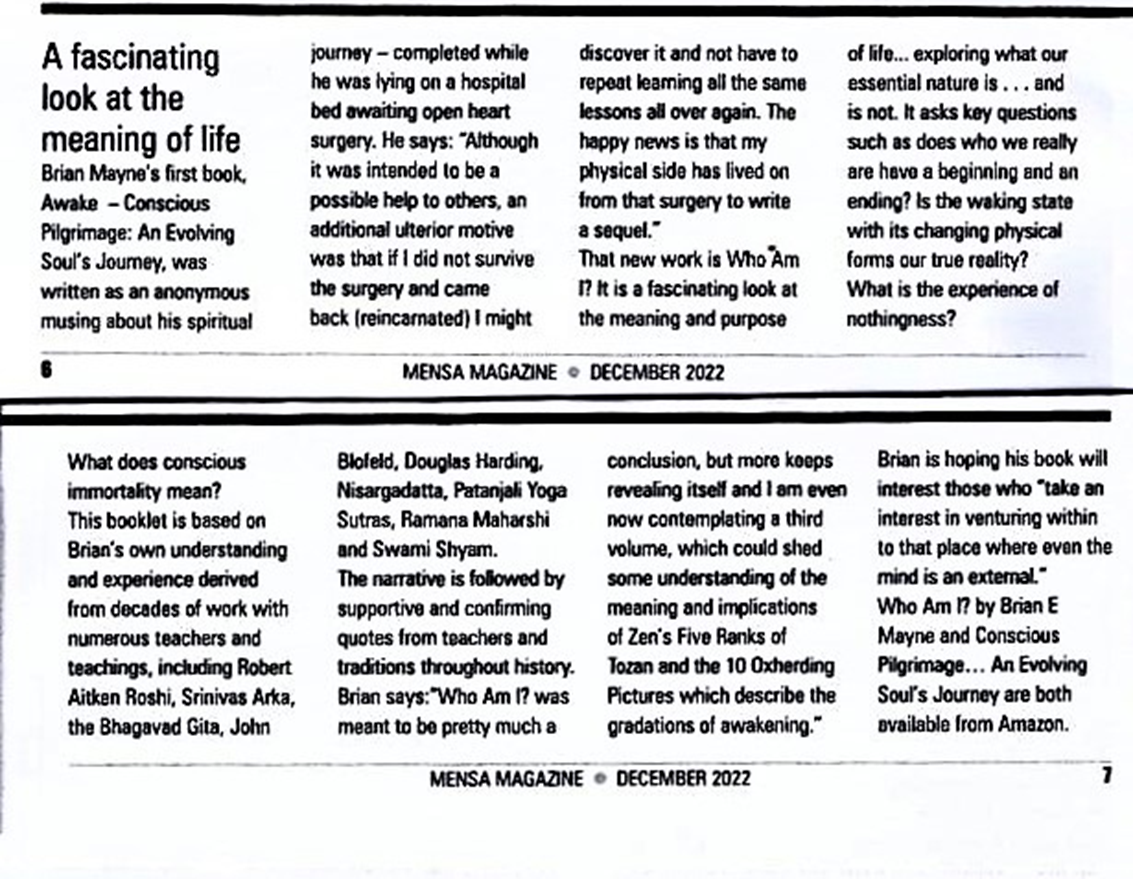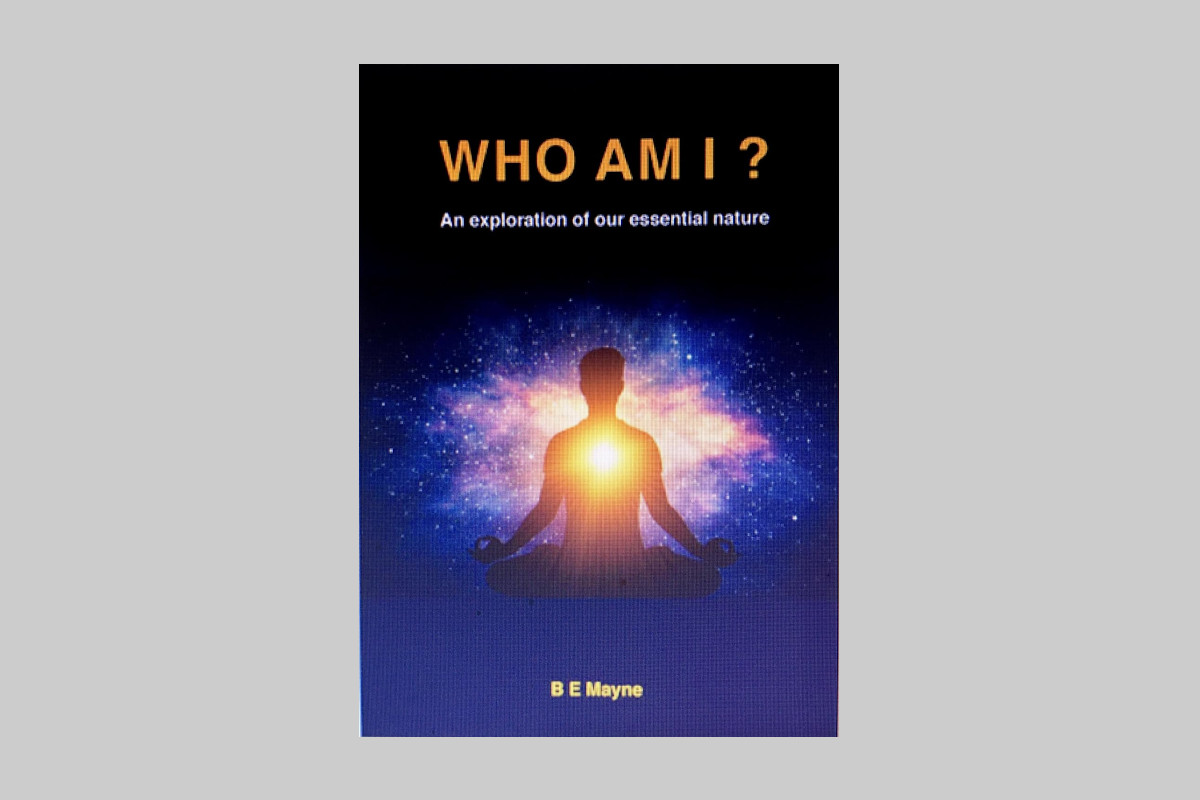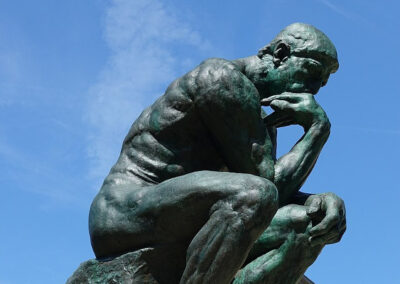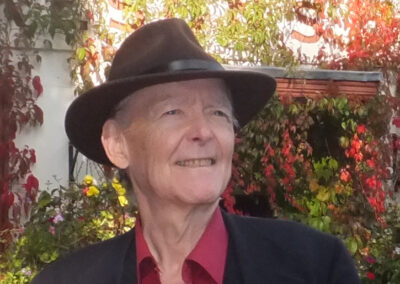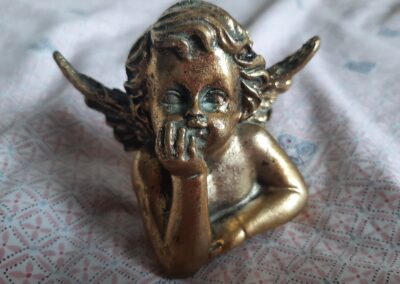Brian Mayne has written lucidly of his spiritual journey. His life style is testimony to the efficacy of his ideas, combining as he does his work on himself with a successful business career
‘Just a few ever wonder who they really are, even fewer seriously explore the topic, and only the rarest manages the direct experience of realizing the core self. Although becoming conscious of it is a rare attainment, this ‘core self’ is accessible to all and naturally part of what we each are as human beings’.
‘Who Am I’ (A sequel to ‘Awake – Conscious Pilgrimage’} is the sharing of personal experience about the deeper mysteries of the deepest self in a form that is easy to read. The journey is as important as the arrival. He asks of himself who exactly he is. His answer in brief is that his primary self is Pure Awareness. It is not aware of anything except itself. This also means outside of time and space. In such a state we are all other dimensional. His approach is shot through with clear common sense though in places his ideas intersect with those of great mystics. His method is to ground assumptions carefully then build on them in logical steps.
Daily experience tells Mayne that he goes through three states:
- Waking consciousness in which I am ‘the Waker’ (mind, senses and actions focus outwards)
- Dreaming sleep in which I am ‘the Dreamer’ (mind focus inwards)
- Deep dreamless sleep, when I am ‘the ‘Sleeper’ (mind does not function at all and I am not even aware of my physical body}
NB Some might demur at the proposition that the mind does not function ‘at all’ but the insight throws up intriguing questions, viz:
If I were my body-mind complex, my life would stop each time I enter deep sleep and start each time I dream or wake up. If so, who is it who remains during deep sleep?
Is it (like) pre-life, (this) deep dreamless state when unaware of the body?
Who am I if not the mind or body that I am witnessing? What was it that was there in the mind’s beginning to learn all that it knows?
This leads Mayne to posit:
‘After some period of contemplating it, we realize that it … must be objective because there is a witness to it… Who I am must be the subject ‘me’ rather than an object…I observe and feel my body, it is an object to my real identity, and I am as the observer and experiencer of it. Similarly, I witness my mind and its thoughts, so who I am cannot be my mind or my thoughts… I must be the innermost ‘me’, ‘me’ at source, rather than anything external which would therefore be separate from this ‘me’.
Awareness is another name for you. Who we are must be the unchanging reality behind the senses. Waking to this awareness is an actual direct experience of coming home to who we already are and have always been.
One’s primary identity is pure awareness rather than consciousness and unconsciousness associated with the human mental states of waking, dreaming and deep sleep.
Our intelligent awareness had to have already been present in the womb A body could only have been created by a pre-existing intelligence, or intelligent awareness…. Since you are awareness there is no need to attain or cultivate it.
This approach leads Mayne on to several further conclusions.
This awareness is timeless. Who we really are never was born and therefore never can die.
To discover who you are, all that you have to do is to give up being aware of other things. It is a conscious direct experience of one’s state outside of the mind which will bring this truth home.
Everything is within the sphere of pure awareness, but pure awareness is senior and cannot itself be witnessed by anything within it.
The subject/source for all objects and even for itself is my awareness, an intelligence alive to itself which can experience everything, but not itself be experienced by anything external to it.
NB A question arises of whether a human being is akin to the universe in a microcosm form. Mayne’s comment here is that ‘if we are microcosms of the universe. If pure awareness is reality and oneness, there is no universe – except in the realm of time and space. Pure awareness is outside of time and space. Manifested realms and beings, are more of a relative reality, and are at best extensions of the pure awareness – or some say consciousness. As you’ve noted: ‘Everything is within the sphere of pure awareness.’ In Hindu terms this is all Maya/illusion. What this means is that what we consider to be reality, the waking state of the mind, is not reality at all. When our physical forms came to this realm of time and space we were brainwashed into believing we are human beings in time and space, but we have never lost the awareness which is our reality and we can find it again if we truly wish to. This means that who we are was never born and being eternal can never die. Effectively this is what spirit is. However, it has always been a mistake to confuse spirit with the physical-mental self. ‘
All that is left is what then might be considered eternal unbounded space of pure awareness . . .without any separate subject, object or even thought. It is timeless and unchanging and it follows that it does not die.
If we close our eyes and step back from the senses and the mind, what we are left with is an alive space which is pure awareness alone. It is a shifting from outer attention and activity to that ‘space’ of inner still awareness which is a oneness without boundaries.
That awareness is with us in our waking activities but forgotten in the distractions of the mind and pull of the senses.
We are in a state of pure awareness in deep sleep but not conscious of it. When we awaken, there is an extremely brief transition from sleep to the mind and personality re-engaging, when we remember and re-establish who we are in our waking state. When we ‘catch’ that brief instant, which is awareness before the mind starts, it becomes a benchmark for us and, with practice, the duration of this state of just awareness can be extended for longer and longer periods.
This reality is characterised by great peace. It is experienced during deep dreamless sleep when awareness of the body and mind are absent . . . but a pure awareness of ‘nothingness’ remains present. Being cannot be experienced as an object, as a sensation, or mental state because it is non-dual. We can only BE it. It is always available if we drop all thinking, wanting or any form of mental activity for a moment and rest as IT.’
Ideas follow as to how to live one’s life in accordance with this understanding, for instance meditation that helps withdraw attention from thoughts and external inputs, perhaps becoming aware of a part of the body – a toe, say – and then step back to that which is the awareness.
One should be open to intuitive wisdom…. A first step is releasing long-cherished beliefs and convictions about who we identify ourselves as being’. This becomes easier when we realize what we intuitively knew and recognized about the already wholeness of our essential aware selves.
Self-realisation can come from a combination of sources, such as the right teacher/s, nature, life experiences, studies and/or even from inside oneself. This also requires the use of discrimination, discernment, and resonance to understand and intuitively recognize the truth of such teachings. Grace can come as well in forms that the mind may have thought of as being negative. Shocks to motivate us to new clarity and evolution. When our mind is open and the self is the base of our identity, the mind can be used without our losing oneself in being a temporal mind and body. Accordingly, we should avoid negative thoughts and cherish positive ones, avoid judging and harming others and cherish respect for all life.
When we identify with being a mind and body, we create a prison for ourselves in time and space. The mind creates its world through imagination. All fears and suffering are linked to time and space. (In doing that) We have forgotten our divine self, the space of intelligence and love, the pure ‘I am’ of our being.
Mayne experiences the problem that confronts many a spiritual teacher: that of writing about a world which the tool of language is inadequate to accurately depict. He has used his ability to think logically, and consider his persona calmly, to help uncover a subjective truth that is also an objective truth for us all. It is a message of hope but, above all, for common sense. It is not breathless enthusiasm or dogged adherence to any cult or Faith. We are entitled to use our minds to go as far as we can into an opaque world but which must be there for all of us, whether or not it can be ‘bottled in a test tube and refined in a laboratory’. If we desire to know why we are on this earth and to live life according to precepts that are attuned to our essential selves, Mayne’s text as a starting point is as good a place to begin as any.
Coda to Brian Mayne Review
Mayne elucidates: re ‘if we are microcosms of the universe.’ If pure awareness is reality and oneness, there is no universe – except in the realm of time and space. Pure awareness is outside of time and space. Manifested realms and beings, are more of a relative reality, and are at best extensions of the pure awareness – or some say consciousness. ‘Everything is within the sphere of pure awareness.’ In Hindu terms this is all Maya/illusion. What this means is that what we consider to be reality, the waking state of the mind, is not reality at all. When our physical forms came to this realm of time and space we were brainwashed into believing we are human beings in time and space, but we have never lost the awareness which is our reality and we can find it again if we truly wish to. This means that who we are was never born and being eternal can never die. Effectively this is what spirit is. However, it has always been a mistake to confuse spirit with the physical-mental self.
Below is a review of the book in MENSA Magazine, December 2022
